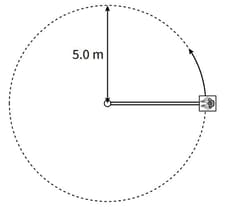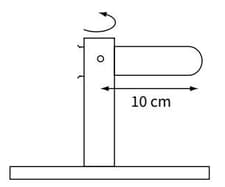In training, military pilots are given various tests. One test puts them in a seat on the end of a large arm that is then spun round at a high speed, as shown.
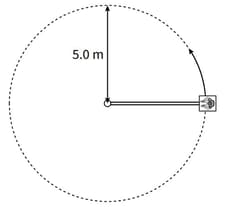
Describe what the pilot will feel and relate this to the centripetal force.


Important Questions on Circular Motion
In training, military pilots are given various tests. One test puts them in a seat on the end of a large arm that is then spun round at a high speed, as shown.
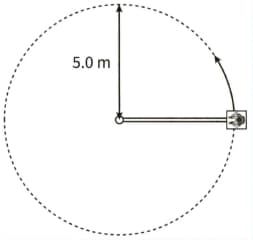
At top speed the pilot will experience a centripetal force equivalent to six times his own weight (). Calculate the speed of the pilot in this test.
In training, military pilots are given various tests. One test puts them in a seat on the end of a large arm that is then spun round at a high speed, as shown.
At top speed the pilot will experience a centripetal force equivalent to six times his own weight (). Calculate the number of revolutions of the pilot per minute.
In training, military pilots are given various tests. One test puts them in a seat on the end of a large arm that is then spun round at a high speed, as shown.
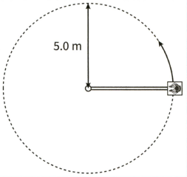
Suggest why it is necessary for pilots to be able to be able to withstand forces of this type.
Show that in one revolution there are Radians.
This diagram shows a centrifuge used to separate solid particles suspended in a liquid of lower density. The container is spun at a rate of 540 revolutions per minute.
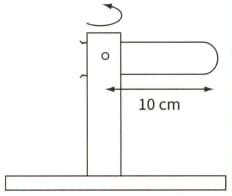
Calculate the angular velocity of the container.
This diagram shows a centrifuge used to separate solid particles suspended in a liquid of lower density. The container is spun at a rate of 540 revolutions per minute.
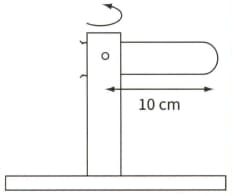
Calculate the centripetal force on a particle of mass 20mg at the end of the test tube.
An alternative method of separating the particles from the liquid is to allow them to settle to the bottom of a stationary container under gravity. By comparing the forces involved, explain why the centrifuge is a more effective method of separating the mixture.

